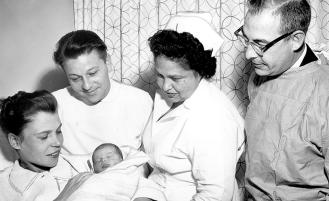Common Sources of Low Back Pain
When we think about health problems linked to obesity, we think about diabetes, hypertension and cardiovascular diseases. But do we ever think that it could be the cause of low back pain? Modern day living requires prolonged sitting, whether it’s sitting at a desk or sitting in a car. This cycle of sedentary life style increases our risk for low back pain and other musculoskeletal disorders. Low back pain is debilitating, and it can also affect our mental wellness and daily activities. Research indicates that low back pain is the second cause of disability in the United States. People with a higher body mass index of >26.0 kg/m2 are at high risk for low back pain.1
There is a big relationship between obesity and low back pain. The load on our back increases as our waistline is further away from the lumbar spine. Our spine has to work extra hard to support the load due to the long lever our waistline creates. Obese patients tend to stand with increased lordotic posture that is similar to a pregnant woman. This will increase the stress on our low backs because the center of body mass shifts forward. Evidence shows that excess weight can affect daily movements such as standing up, walking, side bending and forward bending. Every degree you bend forward, it increases the load on our low back by more than double.2
Preventive care for low back pain includes decreasing BMI and increasing physical activities. It is recommended to have a versatile exercise program that focuses on aerobic, strengthening, stabilization and flexibility. Physical exercises are known to increase blood flow, decrease low back stiffness and improve tissue healing process. Aerobic exercises increase the body’s production of endorphins, which are brain chemicals that can decrease the perception of pain. Endorphins act the same way as morphine and codeine in regards to pain relief, therefore increasing endorphin production is a natural way to promote pain relief for the body.3
Having good core strength contributes to a healthy lumbar spine, and it’s typically addressed early on in a physical therapy program. The transverse abdominis is a deep core muscle that can help stabilize the lumbar spine and improve your posture. Desk jobs are the new norm in modern society, and they increase our risk for low back pain. Slumped sitting posture involves lumbar flexion, which deactivates our core muscles. As the core muscles get weaker from sitting, it makes it more difficult to sit in an upright posture. When your low back is not supported by your core muscles, it relies on other structures such as the spine, ligament and disc for support. Prolonged stress on these structures will cause low back pain.3
Please consult with your physical therapist for a specific training program designed specifically for you. Not all low back pains are created equal; therefore, it is crucial to consult with your healthcare provider.
Citations
- Hanna F, Dass R, El-Shareif T, Al-Marridi H, Al-Rojoub Z, Adegboye O. The Relationship Between Sedentary Behavior, Back Pain, and Psychosocial Correlates Among University Employee. Frontiers in Public Health. April 2019;7:80.
- Vismara L, Menegoni F, Zaina F, Galli M, Negrini S, Capodaglio P. Effect of obesity and low back pain on spinal mobility: a cross sectional study in women. Journal of NeuroEngineering and Rehabilitation 2010;7:3.
- Gordon R, Bloxham S. Physical Activity on Non-Specific Chronic Low Back Pain. Healthcare. 2016;4:22.









